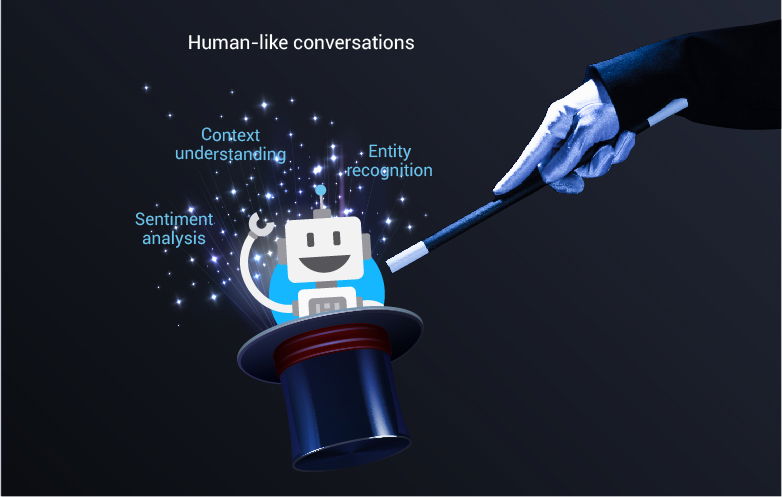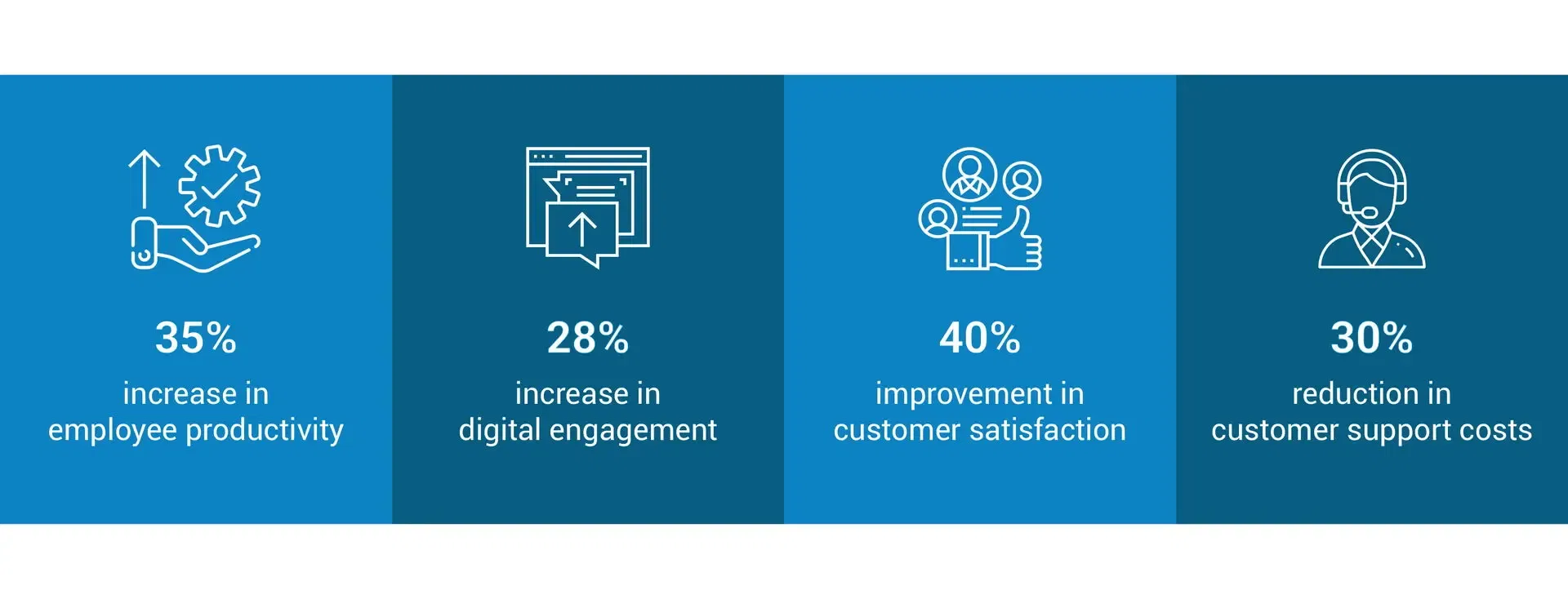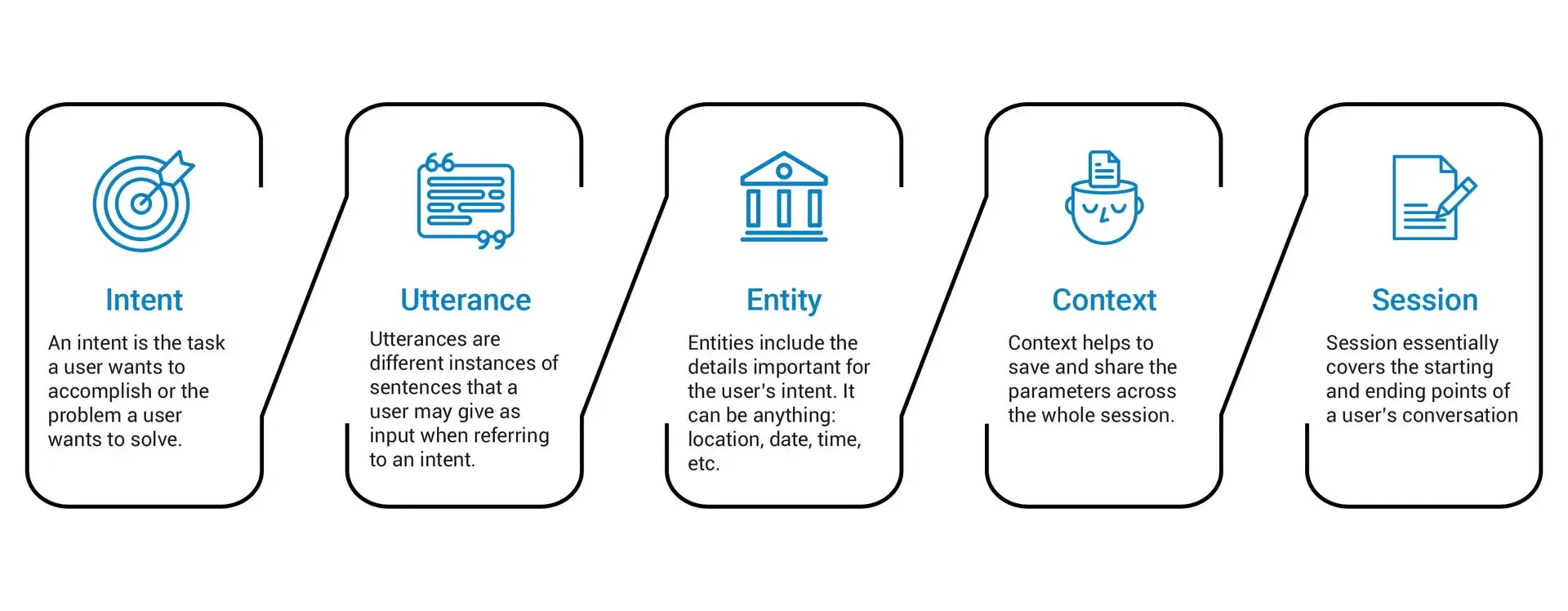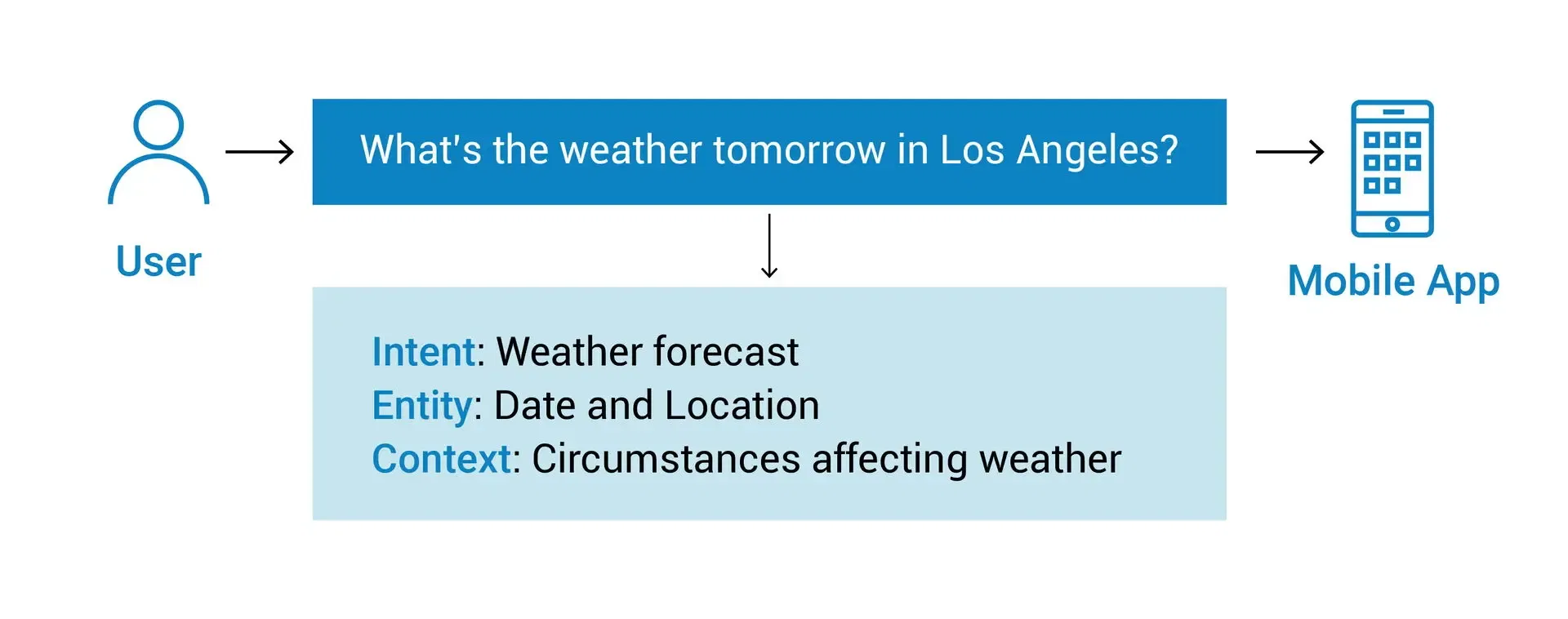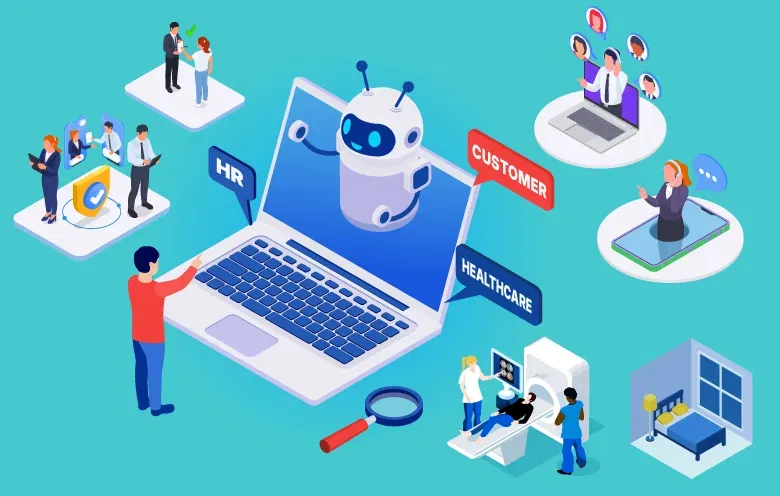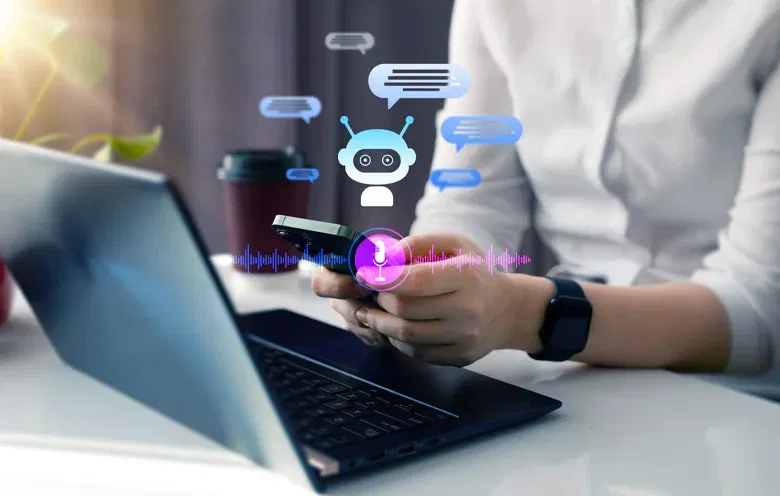Imagine if part of your work is done by a computer. What if, some smart computing capabilities can work as information provider on your website or respond to customer calls – Interesting. Isn’t it?
But it’s no longer science-fiction, in fact, it has become a reality now: modern chatbots emulate human conversations due to artificial intelligence capabilities.
Through this blog, you will see how AI chatbots in 2023 are picking up momentum.
The numbers in the image above are not just random numbers but a realization by…
- Hindustan Unilever when the company turned to an to boost Lipton tea sales.
- CoverGirl when it uses KalaniBot to drive CoverGirl coupon downloads.
- GlaxoSmithKline when it implements machine learning (ML) enabled interactive ads to provide flu advice.
- Dutch airline KLM when it gears up ML implementation in its social media chatbot for flyers.
You must have observed what’s common in all: conversational chatbots.
If you are curious to know how conversational bots work and why conversational chatbot development efforts are a high priority for most companies, this blog post is for you. With that, by the end of this blog, you will also get to know what elements should be considered if you are creating your own AI chatbot.
In fact, in a time, when the coronavirus outbreak has occurred in our highly connected and information-dense world – companies from the finance, healthcare, utility sector agree that to keep businesses and employees productive, creating remote working capabilities is the way to go. That’s why the demand for conversational bots is gearing up.
Before heading up to how conversational bots work and why they are in demand, let’s see the common limitations of traditional chatbots.
Common limitations of traditional chatbots
Most traditional chatbots are script-based, also known as rule-based, so they cannot easily define synonyms, semantics, misspellings, slang, abbreviations, or the overall tone of a user or the context.
For example:
User: How many reward points will I get on spending Rs. 100 through ABC Credit Card?
Bot: You will receive 4 reward points on every Rs. 100 spent.
However, as soon as the user changes the question slightly, the chatbot will give a different answer.
User: Can you please explain the loyalty program structure of ABC Credit Card?
Bot: Apologies. I do not understand. Can you please re-phrase the question?
This happens because traditional chatbots fail to recombine and exchange language objects. Some of the other common limitations of bots are misunderstanding requests, difficulty in understanding accents or cultural dialect, and responding with technical commands. Along with these limitations and to meet customer demands as well, companies feel compelled to develop bots that can converse like humans. To impart such abilities in bots, integration of AI capabilities is the only way out. Let’s look at how integrating AI capabilities makes chatbots more human.
How conversational bots become identical to human conversations
Conversational bots use a combination of natural language processing (NLP), natural language generation (NLG), machine learning (ML), speech recognition, natural language understanding (NLU), and other language technologies to interpret and contextualize spoken or written words as well as find the best way to handle and respond to user inputs.
Natural language processing
NLP is a technological process that allows computers to derive meaning from user text inputs. In doing so, it attempts to understand the intent and entities of the input. To make it possible, developers teach a chatbot to extract valuable information from a sentence, typed or pronounced, and transform it into a piece of structured data.
Any AI chatbot development company’s NLP engines rely on the following elements to process queries:
The core of NLP lies in the comprehension of input and its translation into language that can be easily understood by computers. The key task for NLP engine is to extract intents, parameters, contexts and turn them into a structured data piece while using the elements mentioned above.
Below is one part of the process, data labeling and prediction, while our experts train a model for NLP.
- Get JSON data. Use it as a data-frame. Clean the data as per project requirement like removing rt, hashtags.
- ased on the data provided, various columns are generated to build the model, i.e., Lemmatization Process, number of words columns, character columns, punctuation and additional white spaces, etc. For lemmatization, we use NLTK’s WordNetLemmatizer.
- Generate document vectors based on the data provided using doc2vec model.
- Train/build the model on given data using TFIDF, RandomForestClassifier.bot
- Save the model for future use
- Load model
- Predict sentiment / sentence
- Answer
Now you know how conversational bots work. Along with that, it is also important to know what most AI chatbot development companies consider while building conversational bots.
Explore how intelligent agents that learn, adapt, and take action independently
Why do AI bots work like magic?
AI bots work like magic due to the parameters listed below. These parameters are isolated based on the condition that whether they help developers to organize and structure the mass of unstructured data to meaningful outputs, considered as intelligent, or not:
- Automated summarization (shortening long text pieces intelligently).
- Automated recommendations (facilitate the speedier writing of emails, messages and other texts).
- Translation (phrases and concepts rather than word-by-word translation).
- Entity recognition (identify and classify named entities in unstructured natural languages into pre-defined categories like names of individuals, organizations, locations, price, codes, time, quantities, percentages).
- Extraction of relationships (extraction of semantic relationships between identified entities in natural language text / speech such as “married with,” “is located in,” “is employed by,” “lives in,” etc.)
- Sentiment analysis (classify, for example positive, negative, and neutral opinion views from text or voice, commonly used in social media commentaries, forums or survey replies).
- Speech recognition (allows computers to understand and convert spoken language into text, dictation like Siri or Cortana).
- Theme segmentation (written texts, speech or recordings are automatically divided into short and topically coherent segments and employ to enhance information retrieval or speech recognition).
When all the functionalities mentioned above are met by conversational bots, they can carry human-like conversations and work like magic. Following are a couple of examples to showcase why conversational bots are in demand.
Sentiment analysis
As you are aware now, the latest NLP algorithms can even identify emotions like happy, sad, angry or annoyed. AI makes chatbots capable of catching key triggers – including word placement, connotation, slang – which not only categorizes an emotion but also recognizes the intensity of it. Such analyses can be helpful to trigger custom flows as well as create upselling and cross-selling opportunities, bring in human agents where required and finally to engage customers.
Context understanding
Based on relationship extraction and past knowledge, human conversations differ greatly. AI empowers bots to connect present dialogues with past conversations, preferences, user information and more. Such adaptive chatbots self-learn and personalize their responses.
Overall, the element of context understanding in bots enables companies to deliver tailored experiences. Such a human-like touch works like a magic for customers across the globe.
For example,
Chatbot: Hey, user, how are you doing?
User: Not well. Feeling depressed. Just broke up with my boyfriend.
<14 hours later>
User: Bot, is it going to rain today evening?
Chatbot: Today evening, the weather in town shall be beautiful. It can go to a maximum high of 23 °C. And how are you doing today?
User: Still feeling gloomy.
Chatbot: Here’s a new episode of one of your favorite shows, Tom and Jerry. And let me know if you still feel low and need an extra dose of laughter. I have some surprises for you.
In short, incorporating AI technologies into a chatbot accelerates lead conversions, improves order size or quantity, boosts customer retention and engagement, promotes repeat transactions and enhances other forms of revenue generation. In general, conversational bots improve your business, assistance, orders, direction and advice. And it’s also sure that, when we emerge from the COVID-19 crisis, conversational bots are going to become digital portals for many companies.
